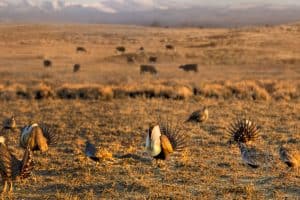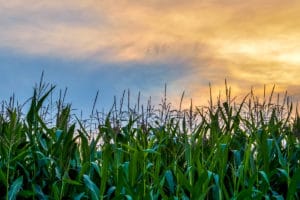On March 1, 1872, Congress signed into law an act that established Yellowstone National Park, the first of 58 protected areas to eventually be designated as national parks. Thus signaled the start of an era in national policy characterized by heavy public investment in conservation and land management.
As of 2010, 138 years later, the Bureau of Land Management held nearly 248 million acres of public land. However, this represents a decrease of two million acres from 2009 and a decrease of 5.5 million acres from 2008. This reduction reflects an effort on the part of public officials who would prefer to see the federal government take a more limited role in conservation efforts while also using the revenue from sales of public lands to pay down the national debt. It also demonstrates a shifting priority away from direct public investment in conservation through outright land purchases and toward providing incentives to individuals and organizations to purchase and manage the land themselves.
While some see this shift as troubling because it means conservation efforts are more haphazard and subject to the varying goals of individual landowners, others see it as an incredibly lucrative opportunity to invest in conservation. Take T. Boone Pickens, for example. Recognizing the economic potential of Texas ranches, he has made a name for himself (and a lot of money) by buying working livestock ranches, improving them with wildlife enhancement programs, and then reselling them. As he recently told The Land Report, “We always made a profit from the ranch sales. But what I really feel good about is knowing that we left the land in better shape than we found it.”
Now it should be noted that Pickens benefitted from a particularly generous set of public incentives with which to offset the costs of his land management programs. You see, Texas implemented a program in 1995 that allows landowners who implement specific land and wildlife management practices to have their land appraised as agricultural land, thereby greatly decreasing their annual tax burden. For those who live in states that do not provide such generous incentives to invest in wildlife management, however, there is an array of state and federal programs that provide payments to landowners for engaging in other various conservation-oriented practices.
While these include such obvious options as securing a conservation easement, landowners also have the option of enrolling in less-permanent programs like the Wildlife Habitat Incentive Program (WHIP), the Conservation Reserve Program (CRP), and the Conservation Reserve Enhancement Program (CREP). In each, government agencies provide cost-sharing and annual payments to landowners that agree to set aside their lands for five- to ten-year periods and commit to protecting and improving wildlife areas, in the case of WHIP, or taking agricultural lands out of production, in the case of CRP and CREP. Case studies abound of landowners who have used these, and other, public programs to help establish and fund conservation efforts and then benefitted greatly from the increased property values when they eventually sold the property.
One of the best examples is that of Robert Macdonald of Triple Chance Farm in Cambridge, Maryland. After recognizing that he could not generate sufficient income from growing cash crops on his land Mr. Macdonald decided to take his land out of production and instead establish an “outdoorsman’s paradise.” With financial incentives from the CRP, CREP, and WHIP programs, Mr. Macdonald developed and instituted a maintenance plan geared toward planting native species that would provide habitat for quail, woodcock, and other bird species. After improving his land over the course of 30 years, Mr. Macdonald fielded bids from five families all vying for his property when he sold in 2009 in the worst real estate market since the Great Depression.
In this era of economic uncertainty, investors are looking for safe bets in the market. Since the housing bubble burst, real estate investment trusts have outperformed the broader market by considerable margins. And best of all, they’re set to continue that trend this year. With help from state and federal programs, landowners can promote greater biodiversity, healthier wildlife populations, and improved water quality, all while earning a strong return on their investment. As T. Boone Pickens put it, what better feeling than to know you’ve improved the land around you and walked away with a few more dollars in your pocket as a result?
This content may not be used or reproduced in any manner whatsoever, in part or in whole, without written permission of LANDTHINK. Use of this content without permission is a violation of federal copyright law. The articles, posts, comments, opinions and information provided by LANDTHINK are for informational and research purposes only and DOES NOT substitute or coincide with the advice of an attorney, accountant, real estate broker or any other licensed real estate professional. LANDTHINK strongly advises visitors and readers to seek their own professional guidance and advice related to buying, investing in or selling real estate.









Being a good steward and treading lightly. Giving the land to the owner, or your kids in better shape than you received it. Just makes sense. Simple.
Andrew, we absolutely agree! It should be that simple but for many, mindset and/or circumstances prevent it from being so. We hope that through this and the next article, we can demonstrate to landowners that conserving the land can indeed be cost-effective and in many cases, even profitable.
Rooting Your Portfolio in Positive-Impact Real Estate
What frameworks are useful in evaluating real estate investments? The Sustainable Land Development Initiative (SLDI), a member-owned organization dedicated to promoting land development around the world, seeks to balance the needs of people, planet and profit – for today and future generations. SLDI is piloting a project at Ocean Mountain Ranch in Oregon using its “SLDI Code” (based on a holistic model) to pioneer innovations in eco-forestry and sustainable living… http://www.triplepundit.com/2011/11/rooting-portfolio-positive-impact-farmland-real-estate-housing/
Thanks so much for the article, Terry! It seems like SLDI is doing some great things for the communities, environment, and their investors.
Thanks Michael.
Your “Putting Your Money into Your Legacy” message is what is needed to offset the damaging effects of today’s existing global power structure which continues to try to conduct business as usual and insist that the economy is in good standing. There is no question that existing systems are unsustainable. The economic value of all of our assets and resources are at stake, and dealing with the symptoms of the problem rather than their root causes, while delaying the consequences and numbing the public to their real effects, only exacerbates the inevitable results.
SLDI State of the World Economy: The Emperor Has No Clothes
http://www.triplepundit.com/2011/09/state-world-economy-emporer-clothes/